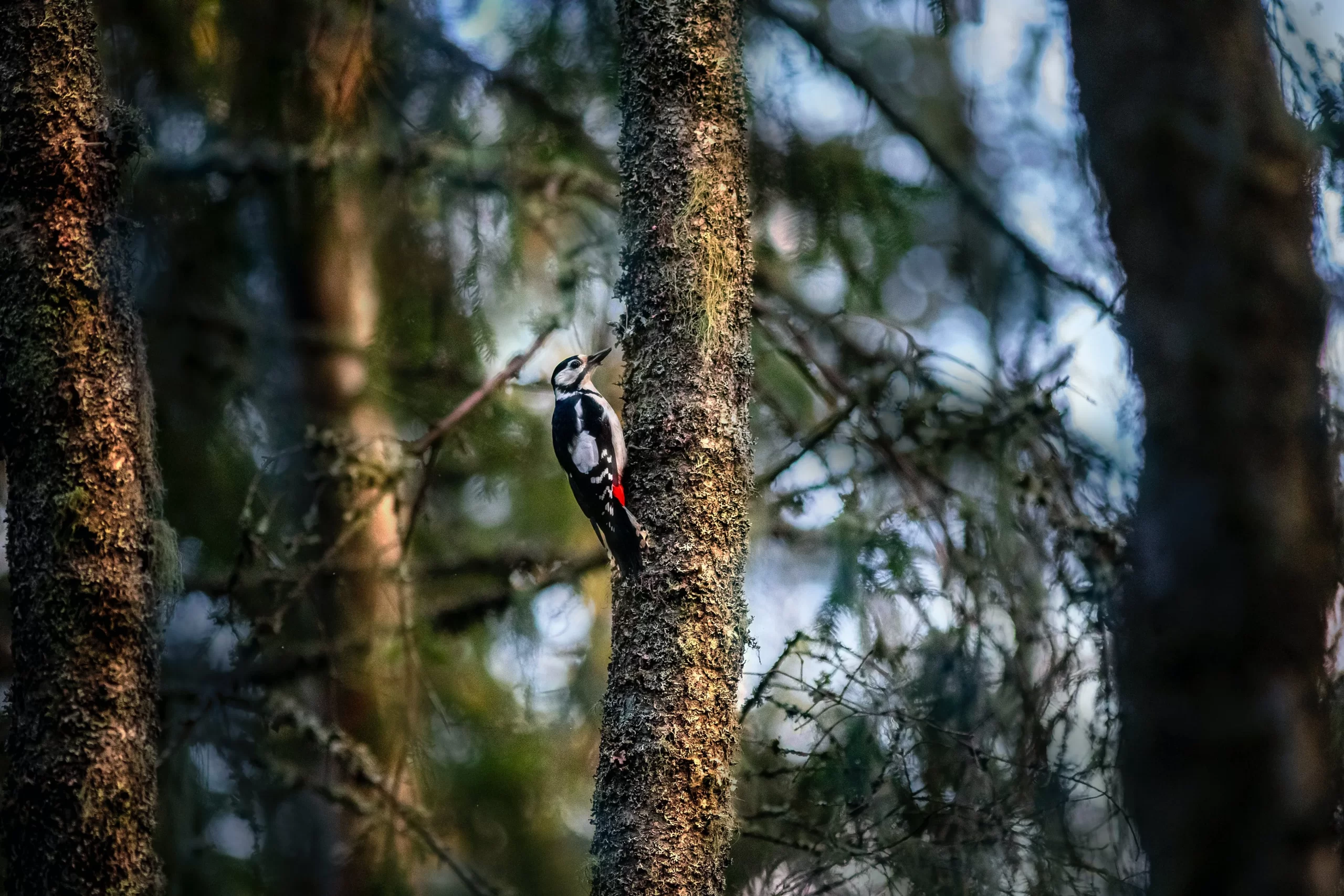Last updated on May 16th, 2024 at 07:34 pm
Many backyard birders grow quite attached to the woodpeckers that spend time in their yards. While some woodpeckers are always present, others may seem to disappear when the weather gets cold. What is the reason for this supposed disappearance? Do woodpeckers migrate in the winter?
If you’re curious about the answer to the question, “Are woodpeckers migratory?”, you’ve come to the right place! Keep reading as I discuss woodpecker migration and the reasons behind this phenomenon.
Table of Contents
Do Woodpeckers Migrate In The Winter?
Woodpeckers are rather easy birds to observe, as they love eating seeds and will thus visit bird feeders and provide plenty of good looks. Therefore, it’s easy for committed backyard birders to know when a certain woodpecker species seems to vanish. Is there a reason why some woodpeckers disappear while others stick around? Do woodpeckers migrate in the winter?
Yes, woodpeckers do migrate! At least, some species participate in annual migration. Woodpeckers are migratory across the globe, with some taking part in lengthy seasonal flights and others moving perhaps a hundred miles each year.
Indeed, woodpeckers are much like owls in their migratory tendencies. Just like woodpeckers, the owls that migrate are in the minority. Nonetheless, some species still participate in these biannual movements.
What Woodpecker Species Migrate?
Of the 22 woodpecker species that are native to North America, 7 are considered to participate in woodpecker migration events. Here are the American woodpeckers that migrate:
- Lewis’s Woodpecker
- Northern Flicker
- Red-breasted Sapsucker
- Red-headed Woodpecker
- Red-naped Sapsucker
- Williamson’s Sapsucker
- Yellow-bellied Sapsucker
North America has a far greater number of woodpeckers that participate in seasonal movements compared to the United Kingdom and Europe, as only one species of woodpecker—the Eurasian Wryneck—migrates in this part of the world.
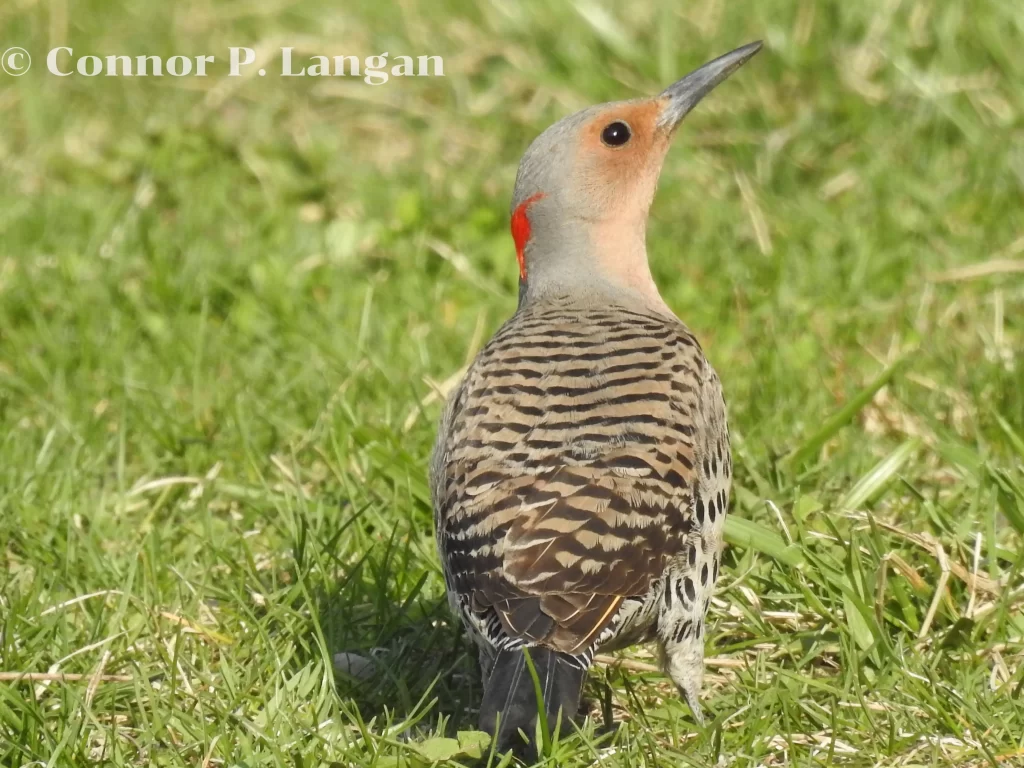
What Woodpeckers Species Do Not Migrate?
Most woodpeckers are not migratory, as millions of these tough birds remain in the same location throughout the year despite often having to deal with bitterly cold weather. Some examples of species that stay put throughout the year include:
- Acorn Woodpecker
- Downy Woodpecker
- Great Spotted Woodpecker
- Pileated Woodpecker
- Red-bellied Woodpecker
Do Pileated Woodpeckers Migrate?
While most woodpeckers are petite, Pileated Woodpeckers are quite the opposite, being crow-sized woodpeckers. Therefore, people take notice when they seemingly disappear from an area. Do Pileated Woodpeckers migrate?
No, Pileated Woodpeckers do not migrate! Despite living as far north as the Northwest Territories of Canada, these birds stay put throughout the year. Indeed, Pileated Woodpeckers are built for winter, as their massive bills allow them to bore into trees and access dormant insect larvae during this challenging season. Although some worry that they kill trees with their enormous bills, the truth is that they typically only bore into dead trees.
Although Pileated Woodpecker migration is not a phenomenon that occurs, you may find that the woodpeckers you’re accustomed to seeing are gone during some seasons. There may be several reasons why they may be absent. First, Pileated Woodpeckers may be tending to a nest if it happens to be the breeding season. A nest full of eggs requires a parent to be present to incubate them, so this may explain why you aren’t seeing a Pileated Woodpecker as often.
Additionally, although adult Pileated Woodpeckers tend to remain in the same area throughout the entire year, young birds will disperse and move to new locations once they’ve matured enough. So, if your backyard has been frequented by a young bird, don’t be surprised if it leaves to set out on its own after a few months.
Ultimately, know that the answer to, “Do Pileated Woodpeckers migrate?” is no, but these birds may still make small, seasonal movements.
Do Downy Woodpeckers Migrate?
Downy Woodpeckers are on the opposite end of the size spectrum as Pileated Woodpeckers, being only 6 inches long. Nonetheless, birders regularly take notice of them thanks to their frequent visits to bird feeders. So, do Downy Woodpeckers migrate?
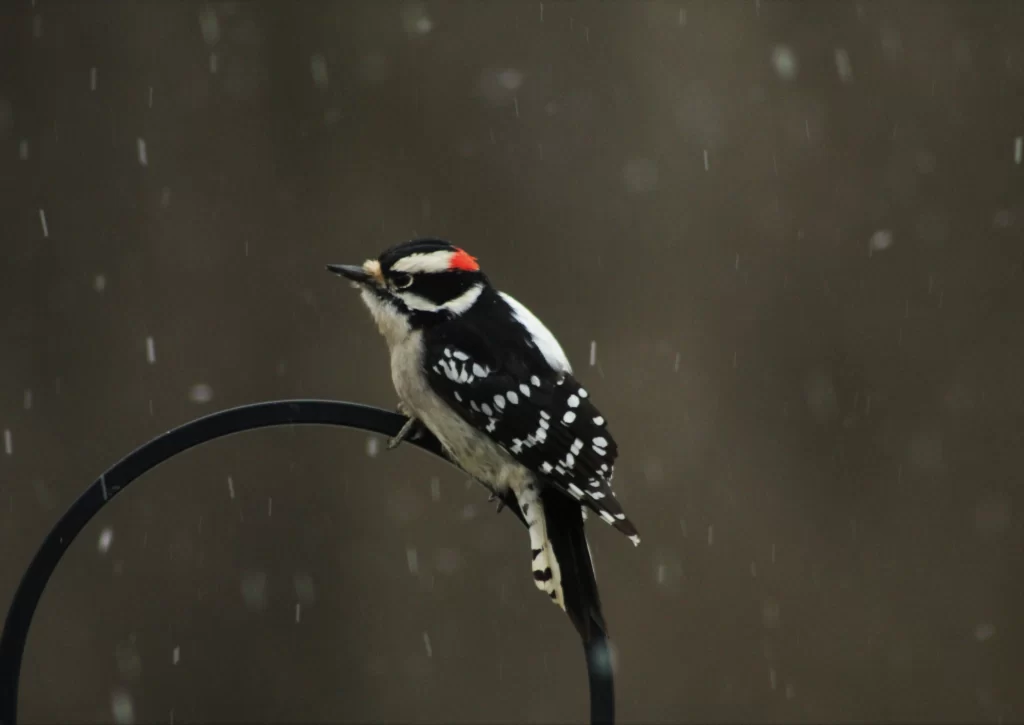
No, Downy Woodpeckers do not migrate. Despite their tiny size, Downy Woodpeckers can easily survive winters in Ontario, British Columbia, and even Alaska! Indeed, they are quite resourceful, being able to forage in dormant grasses, flowers, and other locations that aren’t frequented by other woodpeckers.
Downy Woodpeckers could disappear seasonally for the same reasons that Pileated Woodpeckers do, but the reality is that these small birds live brief lives. Downy Woodpeckers that appear in your backyard may only survive for a year or two.
Why Do Woodpeckers Migrate?
Migratory woodpecker species are certainly in the minority, so why did this select group of birds evolve to migrate? Why do woodpeckers fly south for the winter?
Well, woodpeckers migrate for many of the same reasons that other birds do – they want to take advantage of seasonal abundances of food during the summer and retreat to warmer locations with more food in the winter.
Simple, right? But why don’t woodpeckers just stay in warm places throughout the year instead of traveling north in the spring? Well, woodpeckers migrate north in spring to avoid competition. You see, places that are warm year-round have a far greater density of birds compared to places that have mild summers and cold winters. Therefore, it is much easier to prosper in locations with mild summers, as food and nesting locations are more readily available for woodpecker mates.
The woodpecker species that have evolved to be migratory have also learned to head south in the fall, as they know that winters in their breeding range will likely be cold with minimal amounts of food. So, despite the perils associated with migration, some woodpeckers make annual movements to secure better lives.
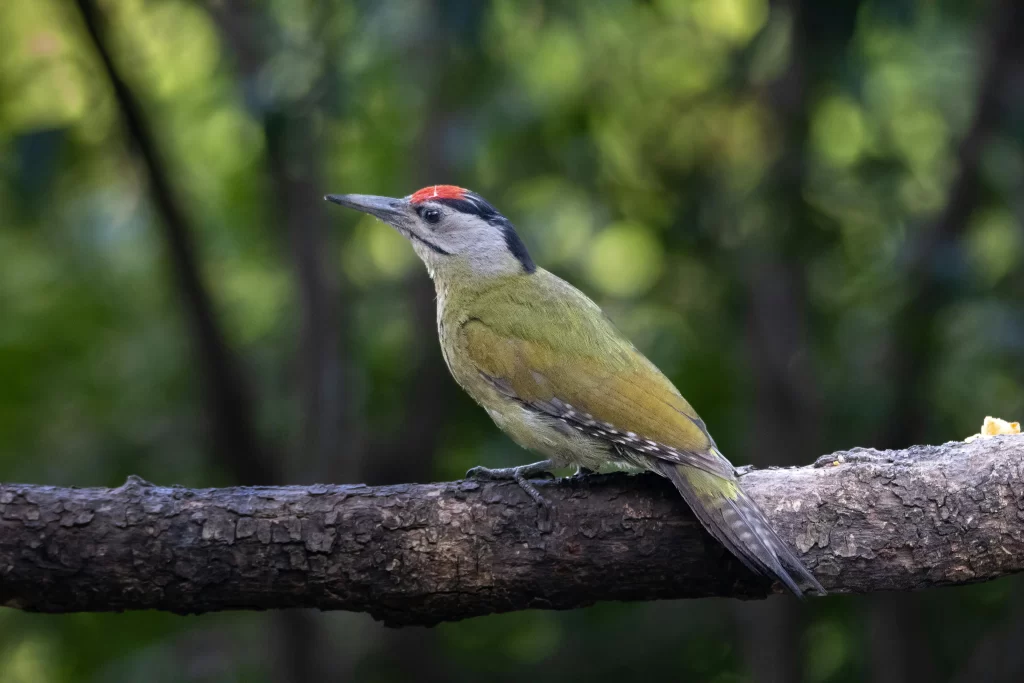
When Do Woodpeckers Migrate?
You may now be wondering when these spectacular migrations take place. When do woodpeckers migrate? Do woodpeckers fly south for the winter?
Well, the timing will depend on the bird species and the locations to which they migrate. For example, Eurasian Wrynecks begin to move north from their wintering grounds in India and Africa in March, and most birds have returned to their breeding territories by the end of April. Meanwhile, most Eurasian Wrynecks depart from Europe by October on their southbound movements.
The exact time of woodpecker migration will vary, but in general, most species begin moving north a few weeks after the onset of spring. On the flip side, fall migration may begin around the start of September for some, while others may not move south until October.
How Far Do Woodpeckers Migrate?
Most woodpeckers are considered to be short to medium-distance migrants, although a few species are long-distance migrants. Again, let’s consider the Eurasian Wryneck. Research suggests that birds in northern Europe travel about 4,500 kilometers (~2800 miles) to reach their wintering grounds in central Africa.
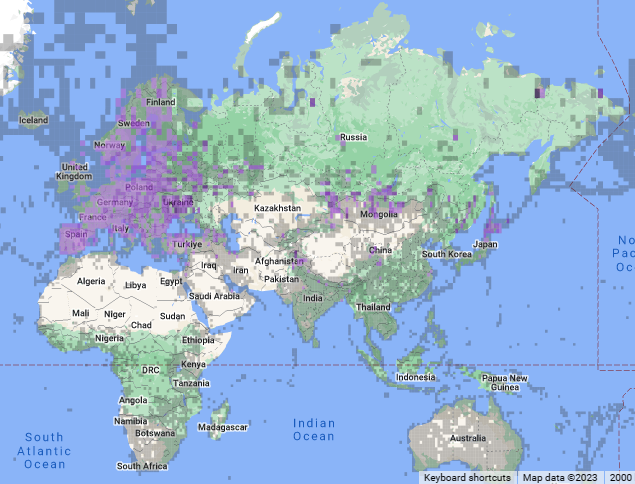
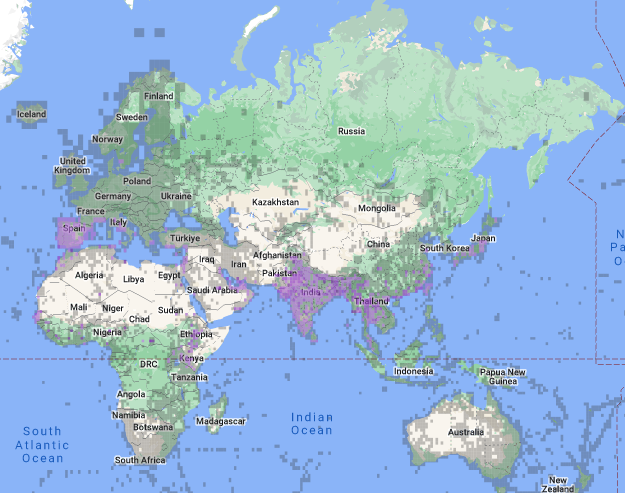
Meanwhile, Red-headed Woodpeckers are often short-distance migrants, with one study finding that a population of these birds only traveled about 111 – 218 kilometers (~69 – 135 miles) south of their breeding grounds.
Do Woodpeckers Hibernate?
The lack of woodpeckers in some northern localities has prompted some to wonder if some hibernate rather than migrate. Do woodpeckers hibernate in the northern portions of their ranges?
While this would be quite incredible, this scenario is simply not true. Woodpeckers, like all other birds, do not hibernate in the winter. In fact, most remain in the same location for most of their lives, with woodpeckers that migrate being in the minority.
So, if anyone asks, “Do woodpeckers migrate or hibernate?” you will be able to set the record straight.
Conclusion
Do woodpeckers migrate? We now know that woodpeckers do—indeed—migrate! At least, there are some species that migrate. However, those who participate in woodpecker migration are in the minority.
Nonetheless, the woodpeckers that do migrate embark in challenging biannual migrations. Those who ask, “Why do woodpeckers migrate?” should know that they do so to access bountiful food resources and nesting opportunities.

